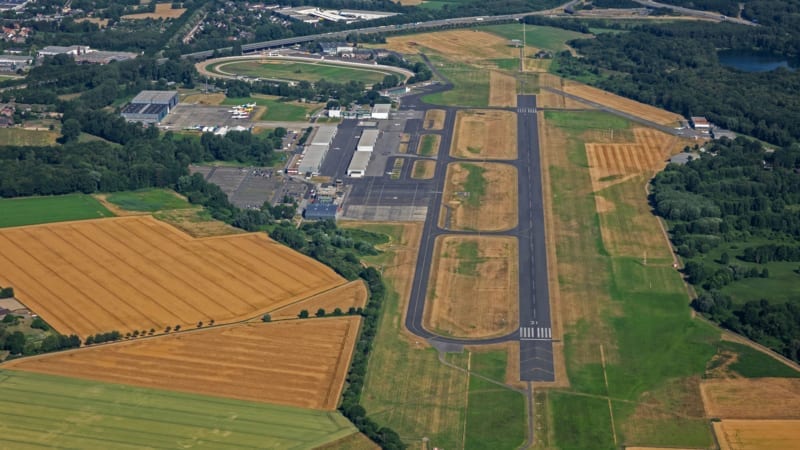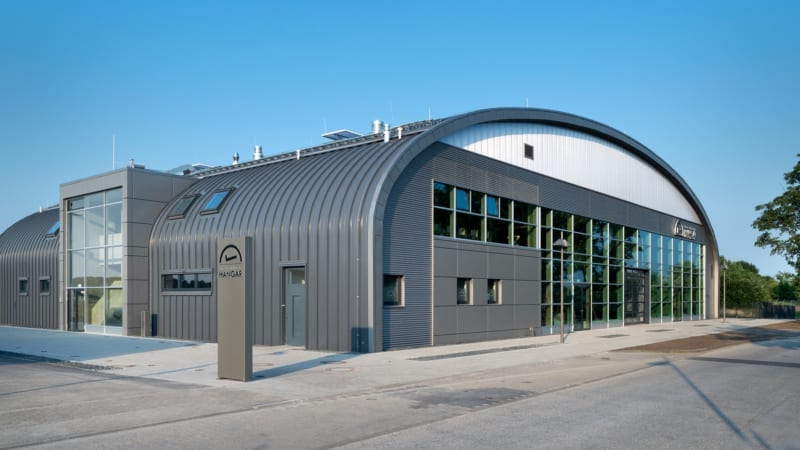MG Airport
From air cabs to zeppelins, from an event hangar to MRO services for commercial and business aviation: Mönchengladbach Airport (MGL) is bringing its potential to the starting line. MGL is the largest general aviation airport in North Rhine-Westphalia and the second largest in Germany. Business pilots appreciate the central location, the weather-independent accessibility and the fast handling. Flight schools offer instrument flight training here. Regional aircraft from all over the world come to Mönchengladbach for maintenance. Private pilots find a home for their aircraft in the hangars. But the high-performance aviation cluster also continues to develop and is strengthened by innovative projects such as the development of new flight systems like the SkyCab.
According to a report by the German Aerospace Center (DLR), the airport offers great development potential through existing hangar space with airfield connections. For this reason, the development into an innovation airport and an Airport City is being driven forward on the basis of the existing advantages of the site as an industrial location. Due to the existing infrastructure consisting of a control zone and an instrument landing system (ILS), MGL can operate largely independent of weather conditions and therefore offers customers, users and also the region a controlled and safe handling of air traffic and important added value for the economic development of the region.
As a business location, the airport is already booming. Currently, the most important areas are the maintenance of a wide variety of aircraft types and engines, for example at RAS, education and training offers of the resident flight schools – RWL German Flight Academy, the largest airline-independent flight school in Germany, is located at the airport – as well as events and tourism through the Hugo Junkers Hangar. Through EWMG, Mönchengladbach is the majority shareholder in Mönchengladbach Airport.
At a time when flying is being rethought, the airport is also positioning itself as an innovation center. Various research and development projects are being driven forward as a new business segment. For example, the airport company is part of an interdisciplinary consortium around the Aachen University of Applied Sciences. With its airspace monitored by air traffic controllers, Mönchengladbach Airport can not only provide an interesting test site for research into unmanned electrically powered aviation with so-called SkyCabs, the air cabs of the future, but it is also a potential departure point for SkyCabs. As in almost all sectors of the economy, the signs in aviation are pointing to change. Topics such as electromobility, new propulsion systems, CO₂-free flying and new forms of (urban) air mobility are changing aviation at an increasingly rapid pace and in some cases disruptively.


